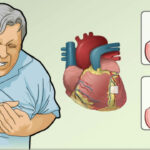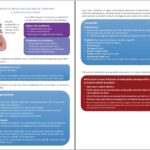Hereditary angioedema (HAE) is a rare but potentially life-threatening condition characterized by recurrent episodes of severe swelling, most often affecting the skin, gastrointestinal tract, and upper airways. Prevention of angioedema attacks in patients with HAE requires a strategic, patient-specific approach that balances pharmacologic prophylaxis with lifestyle modification and trigger avoidance.

Understanding Hereditary Angioedema and Attack Pathophysiology
HAE is caused by a deficiency or dysfunction of C1 esterase inhibitor (C1-INH), leading to excessive bradykinin production. Bradykinin increases vascular permeability, resulting in swelling episodes.
HAE Types
- Type I (85% of cases): Low levels of functional C1-INH
- Type II: Normal levels of dysfunctional C1-INH
- HAE with normal C1-INH: Often linked to mutations in other genes like FXII
These differences influence therapy choices and prophylactic strategies.
Long-Term Prophylaxis for Hereditary Angioedema Attack Prevention
Long-term prophylaxis is recommended for patients with frequent, severe, or life-threatening HAE attacks, or those with impaired quality of life.
C1-INH Replacement Therapy
- IV Formulation (e.g., Cinryze®): Administered twice weekly
- Subcutaneous Formulation (e.g., Haegarda®): More convenient and offers steady plasma levels
Both significantly reduce attack frequency and severity with good tolerability.
Lanadelumab (Takhzyro®)
- A fully human monoclonal antibody targeting plasma kallikrein
- Subcutaneous injection every 2–4 weeks
- Proven in clinical trials (HELP Study) to reduce HAE attacks by over 80%
Recommended for patients seeking effective long-term protection with fewer injections.
Berotralstat (Orladeyo®)
- Oral plasma kallikrein inhibitor taken once daily
- Preferred by patients averse to injections
- Effective in reducing monthly attack rates with a favorable safety profile
Short-Term Prophylaxis: Managing Anticipated Triggers
Short-term prophylaxis is crucial for procedures that may provoke an HAE attack, such as dental work or surgery.
Pre-Procedural C1-INH
- 1,000 units of C1-INH concentrate administered 1–2 hours before the event
- Shown to prevent perioperative and dental-related swelling
Attenuated Androgens
- Danazol and Stanozolol may be used 5 days prior to a known trigger
- Dose tapering recommended after the procedure
Not ideal for long-term use due to androgenic side effects.
Identification and Avoidance of Angioedema Triggers
Trigger avoidance is foundational in preventing HAE attacks.
Common Triggers Include:
- Physical trauma (dental procedures, injuries)
- Stress (emotional or physical)
- Infections
- Estrogens (oral contraceptives, hormone replacement)
- Certain medications (ACE inhibitors)
- Environmental factors (cold, fatigue)
Patients should keep a detailed trigger diary to personalize avoidance strategies.
Lifestyle Modifications for Reducing Attack Frequency
In addition to medication, non-pharmacologic approaches support long-term HAE management.
Stress Reduction
- Mindfulness-based stress reduction (MBSR), yoga, and cognitive behavioral therapy (CBT) help mitigate attacks related to psychological stress
Sleep and Nutrition
- Maintain consistent sleep and avoid known dietary triggers such as alcohol or processed foods that may exacerbate inflammation
Routine and Preparedness
- Always have on-demand medication ready
- Inform family and co-workers about emergency procedures and medication administration
On-Demand Treatment: Essential for Acute Attack Management
Despite preventive measures, breakthrough attacks may occur. Rapid on-demand treatment is vital to reduce severity and prevent airway compromise.
Approved On-Demand Therapies
- Icatibant (Firazyr®): Bradykinin B2 receptor antagonist, administered subcutaneously
- C1-INH concentrates (Berinert®, Ruconest®): IV administration
- Ecallantide (Kalbitor®): Plasma kallikrein inhibitor, administered subcutaneously (requires healthcare provider due to anaphylaxis risk)
Monitoring and Individualized Therapy Adjustments
Continual reassessment of the prophylactic regimen ensures optimal protection and quality of life.
Monitoring Recommendations:
- Attack logs and frequency charts
- Plasma C1-INH levels and function tests
- Adverse event tracking from therapies
- Periodic quality-of-life assessments (AE-QoL tools)
Therapy may need escalation or de-escalation based on frequency, severity, and patient tolerance.
Special Populations: Pediatric and Pregnant Patients
Pediatric Patients
- C1-INH concentrates are first-line
- Lanadelumab and berotralstat approved for patients ≥12 years
- Androgens are not recommended
Pregnancy and Lactation
- Plasma-derived C1-INH is the safest option
- Avoid androgens and newer agents lacking sufficient safety data
The prevention of angioedema attacks in patients with hereditary angioedema demands a multifaceted, individualized strategy. Long-term prophylaxis with agents like lanadelumab, C1-INH replacement, or berotralstat provides reliable protection for most patients. Combining pharmacologic therapy with trigger management, lifestyle adjustments, and emergency preparedness ensures comprehensive care. Continuous reassessment and patient education empower individuals to live with stability and reduced risk of life-threatening complications.

